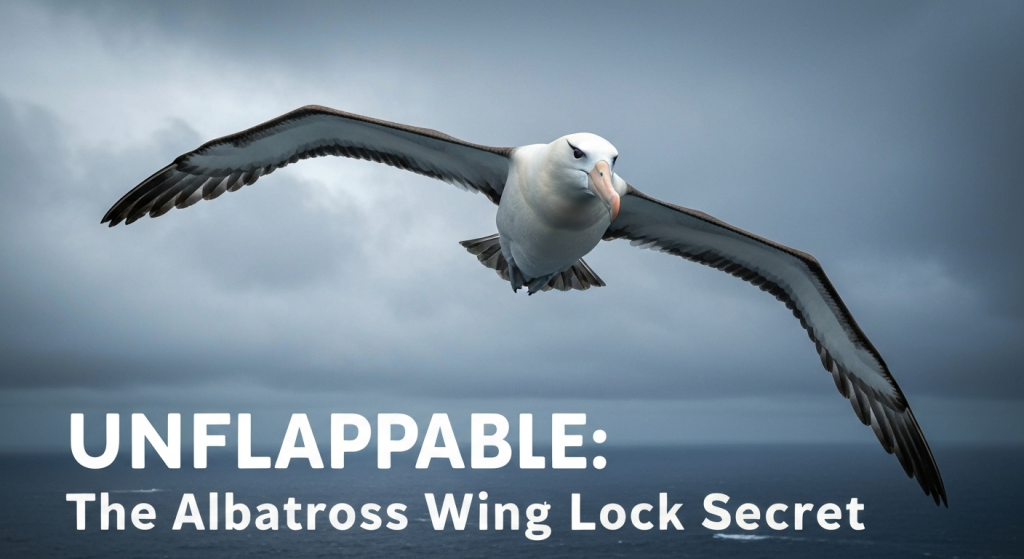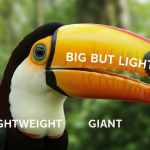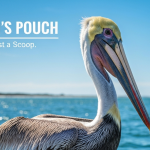Have you ever watched a bird in flight and noticed the constant, powerful flapping required to stay airborne? For most birds, flight is an athletic feat, a continuous burn of energy. Yet, out over the vast, windswept oceans, the albatross sails for thousands of miles with an eerie stillness, its wings held out like a living glider. It can travel for days, even weeks, with barely a flap. This incredible endurance isn’t magic; it’s a masterpiece of biological engineering. The secret lies in a unique anatomical trick and a profound understanding of the wind, allowing these marathon flyers to harness the ocean’s energy and travel the globe with unparalleled efficiency. This article breaks down the science behind how albatrosses lock their wings and master the art of gliding, turning the sky into their effortless highway.
My name is Mahnoor Farooq, and for years, my passion has been exploring the fascinating world of bird species. What started as a simple curiosity has grown into a deep dive into the hows and whys of avian life, from their complex social structures to their incredible physical adaptations. I spend my time translating dense scientific research and field observations into clear, accessible explanations for fellow nature enthusiasts. It’s not about formal titles for me; it’s about the joy of sharing the stories of these amazing creatures and fostering a greater appreciation for the natural world. The albatross, in particular, represents a peak of evolutionary design that I find endlessly captivating.
The Albatross Flight Puzzle: A Masterclass in Effortless Endurance
To truly appreciate the albatross’s skill, we need to understand the challenge it faces. These birds are some of the most widely-ranging animals on Earth. A Gray-headed Albatross, for example, was recorded circumnavigating the globe in just 46 days. They spend the vast majority of their lives at sea, covering distances that are almost impossible to comprehend. For most birds, a journey of this length would be a physiological impossibility. The energy cost of flapping wings for millions of wingbeats would require an unsustainable amount of food.
This is the core of the flight puzzle. How does an animal weighing up to 22 pounds (10 kg) stay airborne over remote oceans for years at a time, often sleeping on the wing, without becoming exhausted? The answer isn’t about strength; it’s about cleverness. Albatrosses have evolved to expend almost as little energy flying as they do sitting on their nests. They treat the sky not as a medium to be powered through, but as a landscape of invisible energy to be exploited. Their flight isn’t a struggle against gravity but a dance with the wind, made possible by a specialized anatomical feature that other birds simply don’t have.
The Secret Weapon: A Shoulder-Lock Mechanism
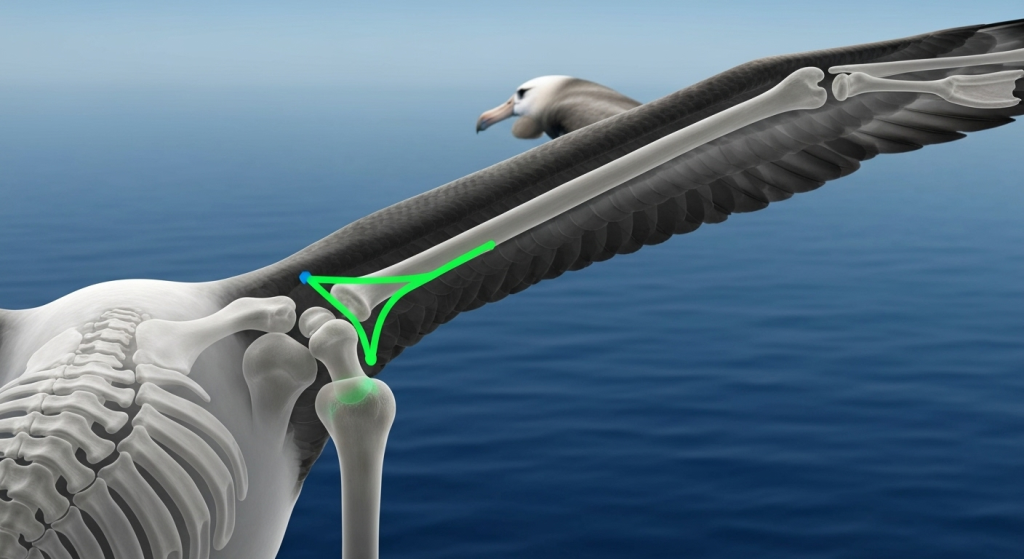
The foundation of the albatross’s energy-saving flight is a simple but brilliant anatomical adaptation: a locking mechanism in its shoulder joint. This allows the bird to hold its massive wingspan—the largest of any bird, up to 11 feet—fully extended without any muscle strain.
Anatomy of the Lock: The Sheet Tendon
Let’s break down how this works. In most birds, holding the wings out requires constant firing of the pectoral and deltoid muscles, which is incredibly tiring. The albatross bypasses this entirely. It has a specialized tendon, often called an epihumeral tendon or sheet-like tendon, that runs along the shoulder. When the albatross fully extends its wing, this tendon engages and locks the shoulder joint in place.
Think of it like the locking hinge on a folding table leg. Once you snap the leg into the open position, it stays there without you having to hold it. You only need to apply a small amount of force to unlock it and fold it back up. The albatross’s shoulder works on the same principle. A small, voluntary muscle contraction is needed to “unlock” the wing for the rare occasion it needs to flap or adjust, but holding it steady is a passive, zero-energy process. This simple tendon is the key that unlocks their marathon flights.
How it Works: Effortless Extension
The process is remarkably efficient:
- The albatross lifts and extends its wings to the optimal gliding position.
- At full extension, the shoulder joint settles into a position where the bones and the sheet tendon bear the load, effectively locking the wing open.
- The muscles that would normally be straining to hold the wing up can completely relax.
- The bird is now a living kite, its structure doing all the work of holding its shape, freeing up its energy reserves for other essential functions.
This mechanism is so effective that scientific studies have shown an albatross’s heart rate during gliding flight is nearly identical to its resting heart rate on land. It is literally resting while in motion.
| Flight Style | Primary Muscles Used | Energy Consumption | Typical Use Case |
| Flapping Flight | Pectoral, Supracoracoideus | High and Continuous | Takeoff, landing, low wind, maneuvering (e.g., pigeons, sparrows) |
| Albatross Gliding | Minimal (for adjustments) | Extremely Low (near-resting) | Long-distance travel over open ocean (e.g., albatrosses, petrels) |
The Art of Dynamic Soaring: Dancing with the Wind
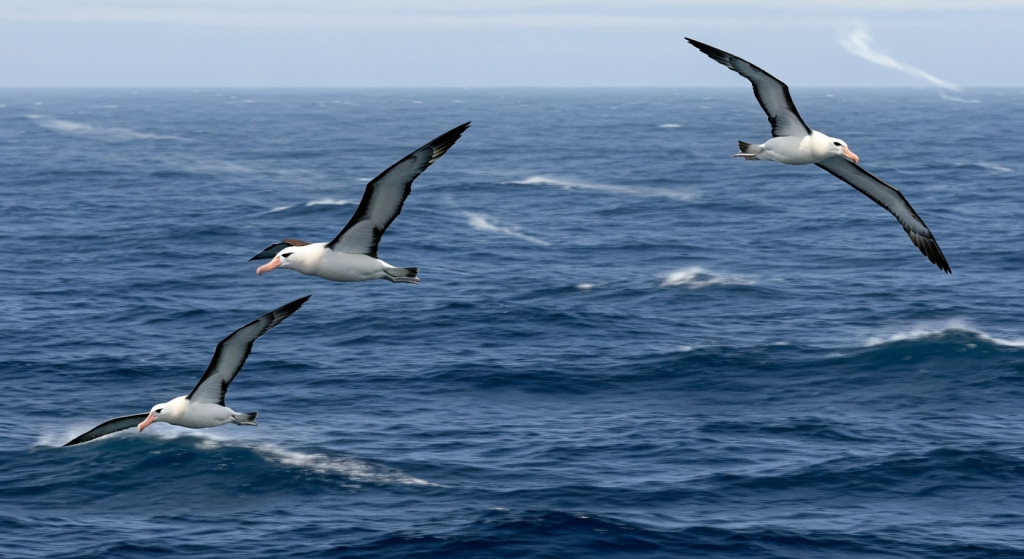
The shoulder lock provides the stable frame, but the engine that drives the albatross forward is the wind itself. Albatrosses are masters of a technique called dynamic soaring, a flight method so complex and graceful that it has inspired engineers designing long-range drones. It is a way of harvesting energy from the wind by flying through differences in wind speed at different altitudes.
What is Dynamic Soaring?
Over the surface of the ocean, there is a “wind gradient.” This means that the wind speed is not uniform. Due to friction with the water, the air right at the surface is much slower than the air 50 feet above it. This difference in speed is a source of free energy, and the albatross has evolved to exploit it perfectly.
Dynamic soaring is a repeating cycle of climbing and descending through this wind gradient. From my own observations watching them off coastal cliffs, the pattern is mesmerizingly consistent. They aren’t just floating; they are actively carving through the air, executing a series of precise maneuvers that generates speed and lift without a single flap.
Riding the Wind Shear
Here’s a simplified breakdown of the dynamic soaring cycle, which the albatross can repeat endlessly:
- Low-Level Glide: The albatross starts by gliding downwind, just a few feet above the ocean waves where the wind is slow. It builds up significant speed due to gravity and momentum.
- The Turn and Climb: It then banks sharply and turns into the wind. As it climbs, it passes through the wind gradient into the faster-moving air layers above. This rush of fast-moving air over its wings provides a huge boost of lift and airspeed, just like a kite getting hit by a gust.
- High-Altitude Stall-Turn: At the peak of its climb, perhaps 40-50 feet high, its momentum nearly runs out. Here, it makes a graceful, stalling turn to once again face downwind.
- The Descent: Now, with the powerful tailwind of the upper air layers pushing it, it dives back down toward the ocean surface, picking up speed and starting the cycle all over again.
By continuously moving between these layers of slow and fast air, the albatross extracts energy from the wind shear—the difference in wind speed. This process allows it to travel horizontally at high speeds (sometimes over 60 mph) for thousands of miles, with the only energy cost being the tiny adjustments needed to steer.
The Numbers Game: Astonishing Energy Conservation
The efficiency of this system is difficult to overstate. It is the absolute pinnacle of low-cost locomotion in the animal kingdom. When scientists attached heart-rate monitors to wandering albatrosses, they discovered something incredible.
- Resting Heart Rate: On the nest, an albatross has a heart rate of about 60-70 beats per minute.
- Gliding Heart Rate: While engaged in dynamic soaring thousands of miles from land, their heart rate was virtually the same, only slightly elevated.
- Flapping Heart Rate: On the rare occasions they needed to flap—during takeoff or in dead calm—their heart rate would spike to more than double its resting rate.
This data provides clear proof that their primary mode of flight is almost metabolically free. They have traded muscle power for an intricate knowledge of aerodynamics and wind patterns, coded into their DNA over millions of years of evolution. This is why they can thrive in an environment where food is sparse and scattered over immense distances. They don’t need to find food to fuel their flight; they only need to find enough to sustain their basic metabolism.
| Albatross Activity | Approximate Heart Rate (Beats Per Minute) | Energy Cost Comparison |
| Resting on Nest | ~65 bpm | Baseline |
| Dynamic Soaring | ~75 bpm | ~1.15x Resting Rate |
| Active Flapping | ~150+ bpm | ~2.3x+ Resting Rate |
An Exclusive Adaptation: Why Only Albatrosses and Their Kin?
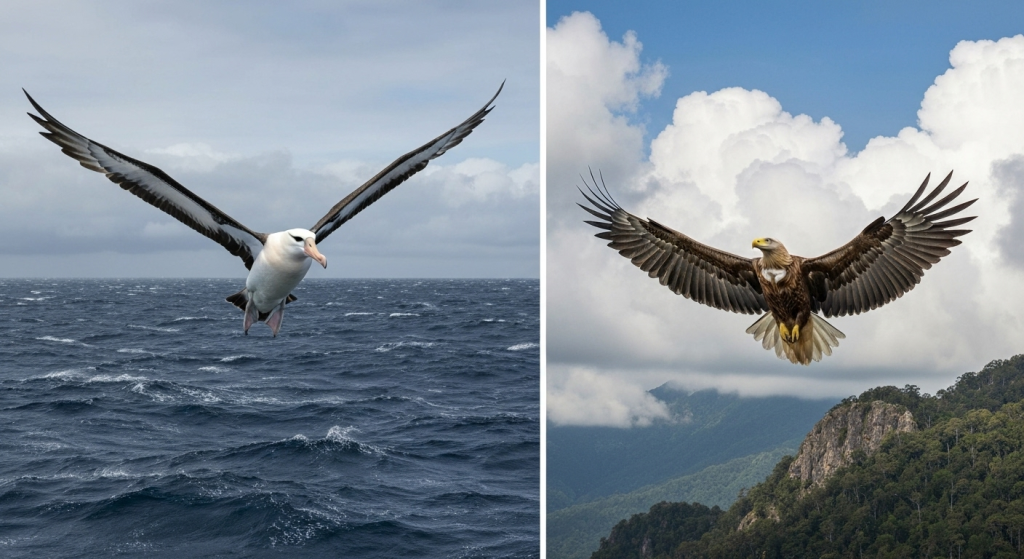
If this system is so efficient, why haven’t other birds like eagles, vultures, or storks evolved it? The answer lies in the unique intersection of anatomy, environment, and lifestyle. The shoulder-lock and dynamic soaring are a specialized toolkit for a very specific job.
The Need for Unmatched Efficiency
The albatross lifestyle is one of extremes. They are pelagic, meaning they live exclusively over the open ocean. Their food source (squid, fish, krill) is often unpredictable and found in patches separated by hundreds or thousands of miles of empty water. A bird that had to flap across these food deserts would simply starve. Their survival depends entirely on their ability to cover these vast distances with minimal caloric burn. Land-based birds, even large raptors, operate in environments where food is more concentrated and landing spots (trees, cliffs) are always available. They don’t face the same evolutionary pressure to develop such an extreme energy-saving mechanism.
Body Size and Wing Shape
The physics of dynamic soaring favors a very specific body plan: a heavy body with extremely long, thin wings. This is known as a high aspect-ratio wing.
- Albatross Wings: Long and narrow. This shape is aerodynamically perfect for gliding, minimizing drag while maximizing lift at high speeds. It’s similar to the wings of a competition sailplane.
- Eagle/Hawk Wings: Broader and shorter with slotted feathers at the tips. This shape is designed for maneuverability, soaring on thermal updrafts over land, and generating powerful thrust for taking off with heavy prey.
An eagle’s wing shape is terrible for dynamic soaring, and an albatross’s wing shape is clumsy for maneuvering in a forest or taking off from a flat field without a strong headwind. Each is a specialist, perfectly adapted to its own environment. The shoulder lock is only truly useful for a bird with the right kind of wings and the right kind of environment to use them in. This is why this incredible adaptation is found only in the order Procellariiformes, which includes albatrosses, petrels, and shearwaters—the true masters of the ocean winds.
Frequently Asked Questions
Can albatrosses fly without any wind?
No, not efficiently. In conditions of dead calm, an albatross is effectively grounded. It must resort to clumsy, energy-intensive flapping or simply wait on the water for the wind to pick up. Their entire flight strategy depends on wind.
How long can an albatross stay in the air?
Albatrosses can stay airborne for months, and in some cases, young birds may spend the first 5 to 10 years of their life continuously at sea without ever touching land after they first fledge. They hunt, eat, and even sleep while gliding.
Do baby albatrosses have this wing-locking ability?
Yes, the anatomical structure for the shoulder lock is innate. However, mastering the complex art of dynamic soaring takes practice. Fledgling albatrosses can be seen clumsily practicing their takeoffs and glides before they have the skill and confidence of the adults.
Why don’t airplanes use a similar wing-locking mechanism?
In a sense, they do. An airplane’s wing is a rigid structure that is inherently “locked” in place. The albatross’s adaptation is remarkable because it achieves this rigidity in a flexible, biological limb, allowing it to switch between locked gliding and active flapping when needed—a level of versatility that is difficult to replicate mechanically.
Conclusion
The albatross is a living testament to the power of evolutionary refinement. It solved the problem of long-distance flight not with bigger muscles, but with a simple, elegant piece of anatomical engineering and a behavioral mastery of its environment. The shoulder lock that holds its wings steady and the dynamic soaring technique that draws energy from the air are two sides of the same coin, working in perfect harmony. They allow this magnificent bird to live a life of freedom over the open ocean, effortlessly connecting continents and conquering distances that would leave any other creature far behind. The next time you see a seabird gliding without a flap, you’ll know it’s not just floating—it’s performing a complex and beautiful dance with the wind.
